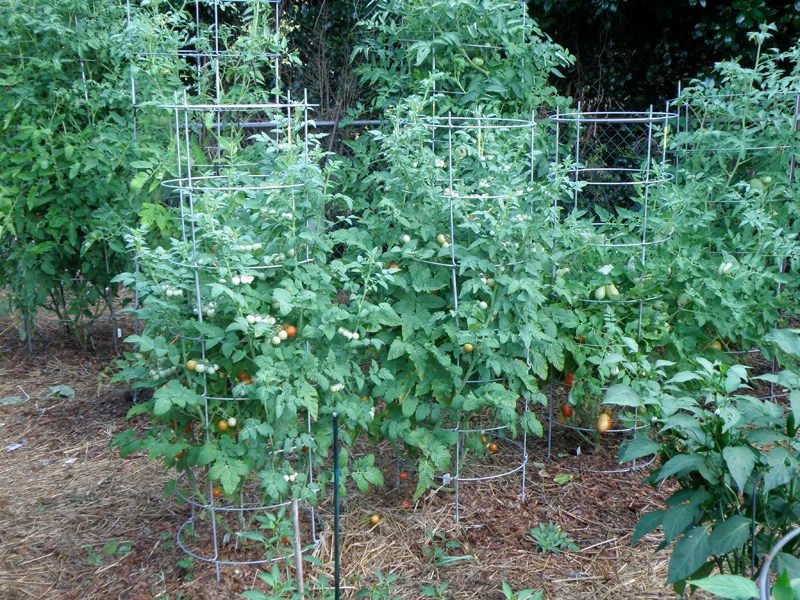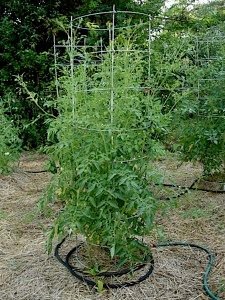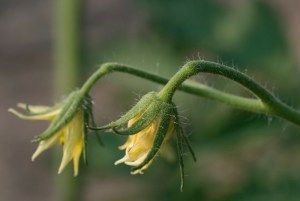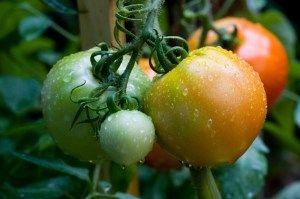How to Plant tomatoes
How to Plant and Care for Tomatoes
Tomatoes run on warmth; plant in late spring and early summer except in zone 10, where they are a fall and winter crop.
Devote a prime, sunny spot to growing tomatoes. Tomatoes need at least 6 to 8 hours of sun to bring out their best flavors.
You will need to stake, trellis, or cage most tomato plants to keep them off the ground. Decide on a support plan before you set out your plants, then add that support directly after planting.
Give each plant enough room to grow. Space robust, long-vined, indeterminate varieties about 3 feet apart. Stockier determinate plants can be grown 2 feet apart. If growing in containers, you’ll need at least a 24-inch pot for an indeterminate variety, or an 18-inch pot for a determinate variety.

Tomatoes take up nutrients best when the soil pH ranges from 6.2 to 6.8, and they need a constant supply of major and minor plant nutrients. To provide needed nutrients, mix a continuous-release fertilizer with calcium, like Miracle-Gro® Shake ‘n Feed® Tomato, Fruit & Vegetable Plant Food, into the soil as you prepare the planting holes. (Be sure to read and follow all directions.) This will help protect fruit from blossom end rot, a problem that can occur when the plant isn’t getting enough calcium.
At the same time, mix in 3 to 4 inches of compost, which will provide minor nutrients and help hold moisture and fertilizer in the soil until it is needed by the plants.
Soaker hose around tomato plant: growing tomatoes, how to grow tomatoes
A soaker hose waters a tomato plant well and without waste. Cover with mulch once it’s in place.
To grow a really strong tomato plant, we recommend burying two-thirds of the stem when planting. This crucial step will allow the plant to sprout roots along the buried stem, so your plant will be stronger and better able to find water in a drought. Please note that this deep-planting method only works with tomatoes (and tomatillos), not other veggies.
Immediately after planting, water seedlings to help settle them in.
You can combine fast-maturing varieties with special season-stretching techniques to grow an early crop, but wait until the last frost has passed to plant main-season tomatoes.
Cover the ground with 2 to 4 inches of mulch to minimize weeds and help keep the soil evenly moist. Straw and shredded leaves make great mulches for tomatoes.
Water regularly, aiming for at least an inch of moisture per week (through rain or watering), more in the summertime. Feel the soil; if the top inch is dry, it’s time to water.

How to Troubleshoot Tomato Problems
Tomato blossoms: growing tomatoes, how to grow tomatoes
Tomato blossoms can be temperamental. If it’s too cool (below 55˚) or too hot (above 90˚), the flowers of most varieties will pause from setting fruit until the temperature is back where they like it.
As summer heats up, some tomatoes have trouble setting fruit. Be patient, and you will start seeing little green tomatoes again when nights begin cooling down. Meanwhile, promptly harvest ripe tomatoes to relieve stressed plants of their heavy burden. If you live in an area in which summertime temperatures are typically in the 90s, be sure to choose some heat-tolerant tomato varieties, bred for their ability to set fruit under high temperatures.
If summer droughts are common in your area, or you tend to forget to water, use soaker hoses, drip irrigation, or other drought-busting techniques to help maintain even soil moisture. Not only will this help prevent cracked fruits, but also help keep blossom end rot at bay. (Moisture fluctuations can reduce the amount of calcium the plant is able to take up, which can lead to blossom end rot.)
Humid weather creates ideal conditions for fungal diseases like early blight, which causes dark spots to first form on lower leaves. Be sure to remove any unhealthy looking or diseased leaves throughout the season. Late blight is a more devastating disease that kills plants quickly; the only way to control it is to protect against it by spraying the leaves with an approved fungicide such as chlorothalonil or copper, and to keep the garden clean of plant debris.
You’ll also want to be on the lookout for pests. In mid-summer, for example, big green caterpillars called tomato hornworms eat tomato foliage and sometimes damage fruits. One or two hornworms can strip a plant leafless in short order! Deal with pests as soon as you spot them.
By late summer, plants that began producing early in the season will show signs of exhaustion. With just a little effort, you can extend the life of those sad tomato plants by pruning away withered leaves and branches. Then follow up with liquid plant food and treatments for leaf diseases or insects, if needed.
Check out our article on Tomato Quirks for more troubleshooting information.

How to Harvest and Store Tomatoes
Ripening tomatoes: growing tomatoes, how to grow tomatoes
This cluster of tomatoes shows several stages of ripening. Tomatoes ripen to different colors depending on the variety.
As tomatoes begin to ripen, their color changes from vibrant medium-green to a lighter shade, with faint pink or yellow blushing. These “breakers,” or mature green tomatoes, can be chopped into salsas, pickled, or pan-fried into a crispy appetizer. Yet tomato flavors become much more complex as the fruits ripen, so you have good reason to wait. The exact signs of ripeness vary with variety, but in general, perfectly ripe tomatoes show deep color yet still feel firm when gently squeezed.
Store picked tomatoes at room temperature indoors, or in a shady place outside. Never refrigerate tomatoes, because temperatures below 55° cause the precious flavor compounds to break down.
Bumper crops can be frozen, canned, or dried for future use.

Great article. I love gardening. I have lots of plants in my balcony. I will try this one also